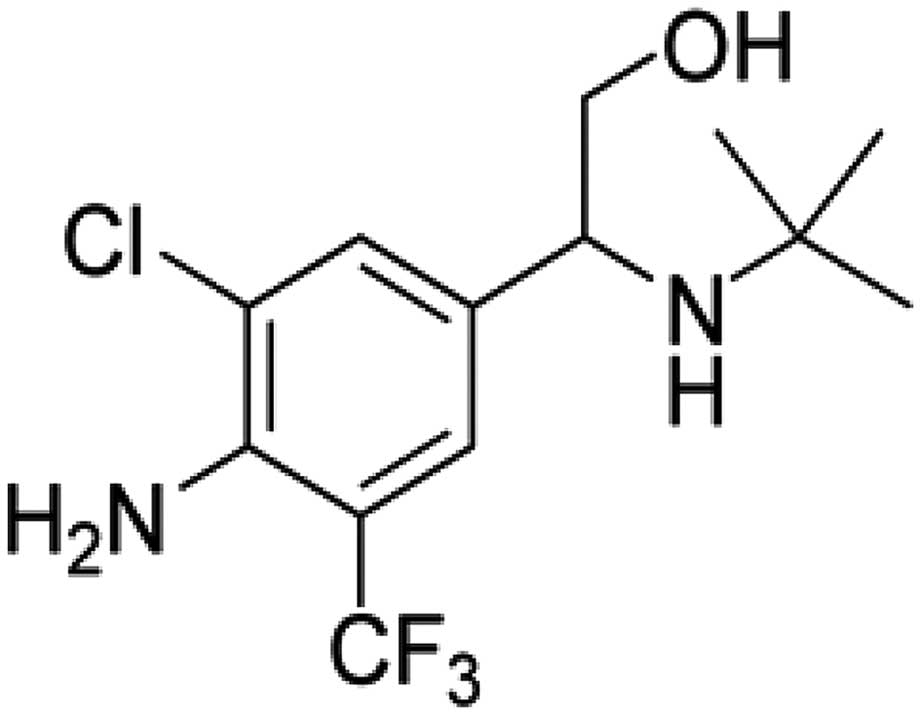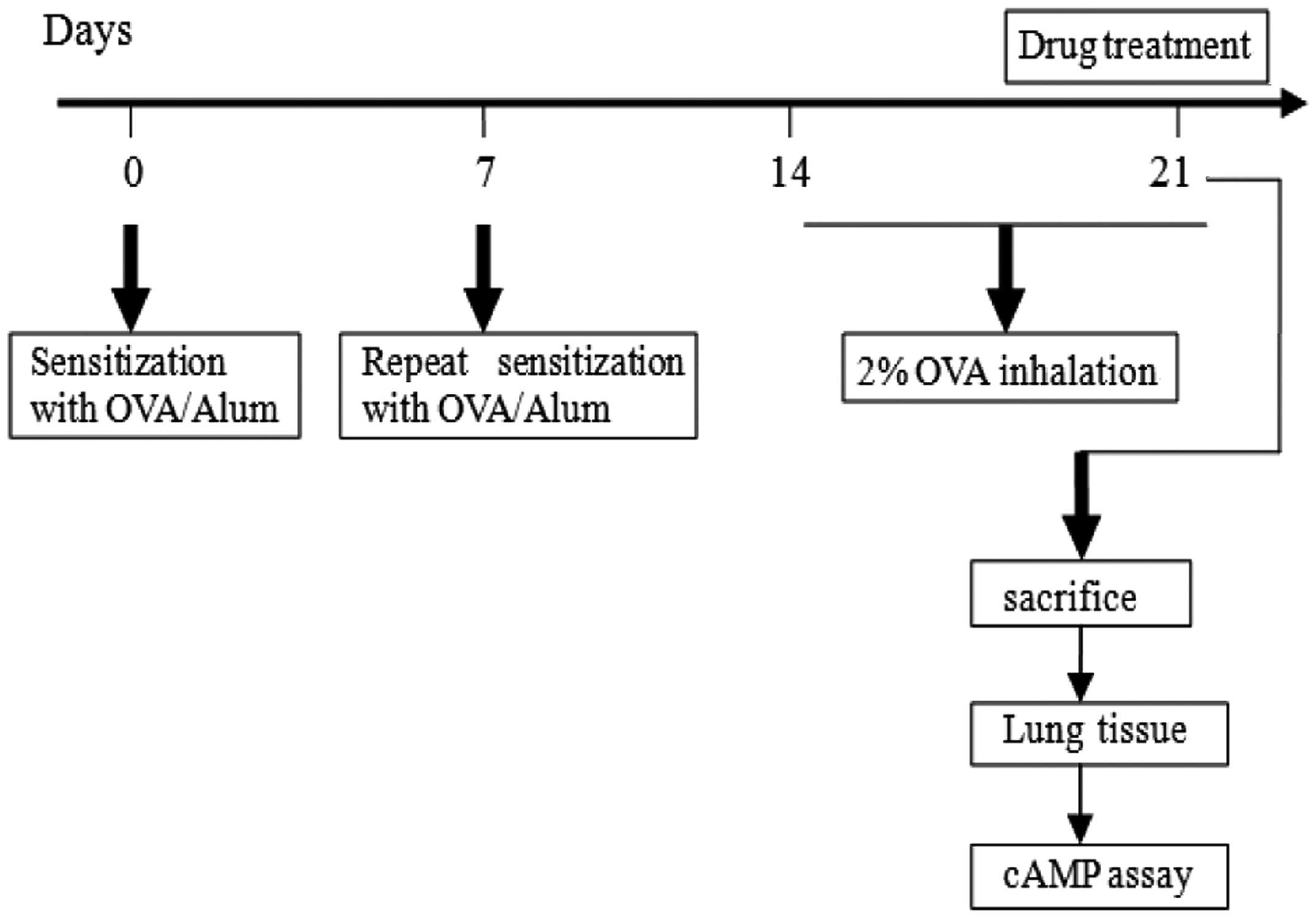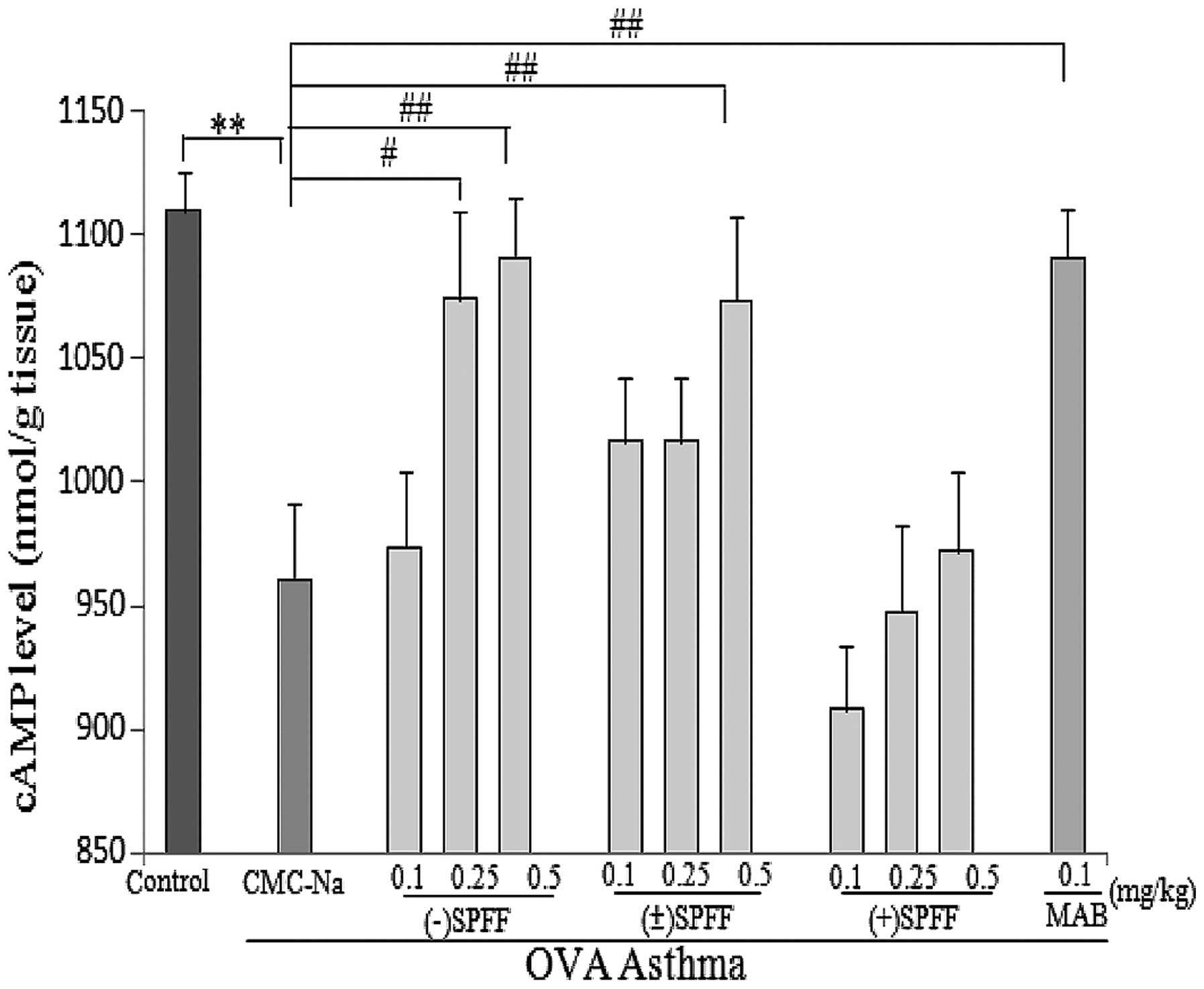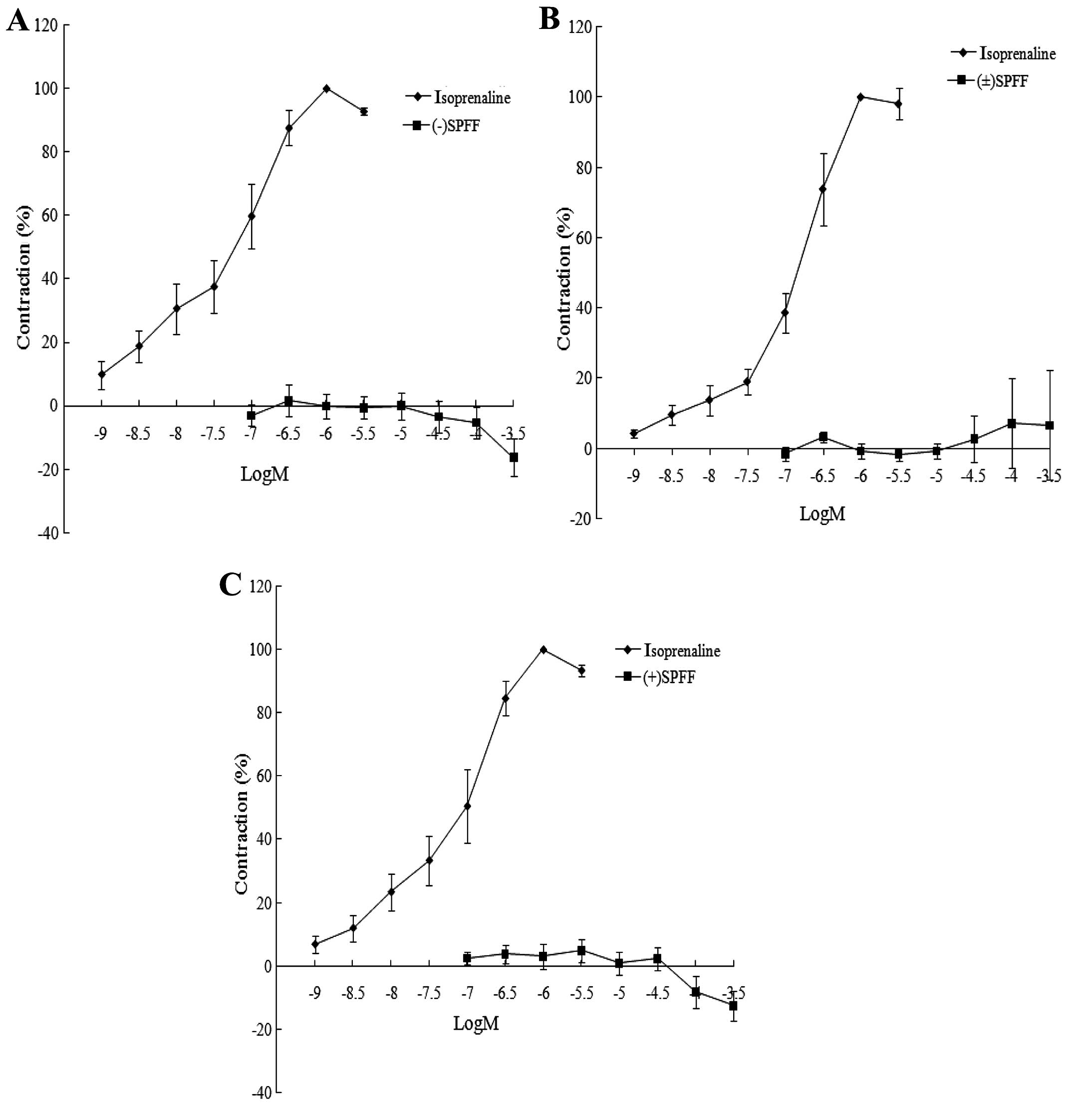Stereoselective activity of 2?(4?amino?3?chloro?5?tri?uomethyl?phenyl)?2?tert?butylamino?ethanol hydrochloride to improve the pulmonary function in asthma
- Authors:
- Published online on: May 19, 2014 https://doi.org/10.3892/br.2014.279
- Pages: 539-544
Metrics: Total
Views: 0 (Spandidos Publications: | PMC Statistics: )
Total PDF Downloads: 0 (Spandidos Publications: | PMC Statistics: )
Abstract
Asthma is a chronic airway disease that is characterized by significantly exacerbated bronchospasms and marked inflammation of the airways. Although the etiology of asthma remains to be determined, genetic predisposition is one of the factors involved. ?2?agonists compounds may serve as options for the treatment of bronchial asthma. The aim of the present study was to investigate the effects of 2?(4?amino?3?chloro?5?tri?uomethyl?phenyl)-2?tert?butylamino?ethanol hydrochloride (SPFF) and its enantiomers with regard to improving asthmatic pulmonary function and selective binding to ?2?adrenergic receptor. The bronchoconstrictor action of histamine in guinea pigs was conducted and the results demonstrated that (?)SPFF and (±)SPFF could significantly inhibit the increase of bronchoconstriction induced by histamine, while (+)SPFF did not show an effect. Inflammatory mediator release from allergic lung tissues was determined and it was found that (±)SPFF showed the highest activity among all the tested compounds, while the efficacy of (?)SPFF was similar to that of (+)SPFF. SPFF and its enantiomers stimulated cyclic adenosine monophosphate (cAMP) production in the asthmatic lung tissues examined, showing that asthmatic lung tissues had a significant cAMP enhancement in response to (?)SPFF and (±)SPFF compared with (+)SPFF. Cardiac contractility of the right atria was assessed in the guinea pigs to establish the receptor selectivity of the compounds. The results indicated that all the compounds had high affinities to the ?2 receptor. In conclusion, with regards to asthmatic pulmonary function improvement, (?)SPFF was more efficient as compared to (+)SPFF, while no significant difference was observed for the receptor selectivity of (?)SPFF and (+)SPFF.















